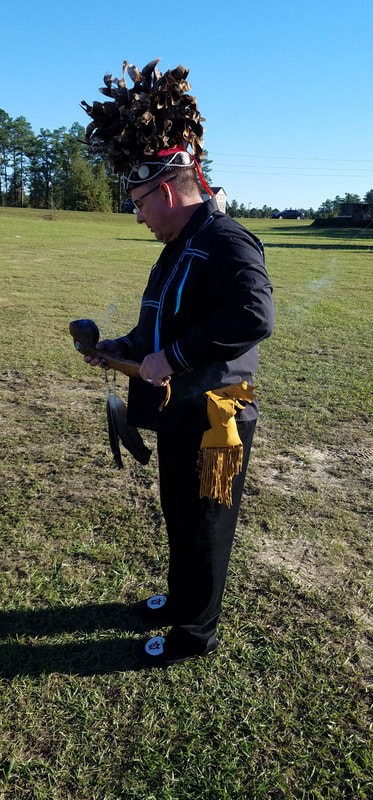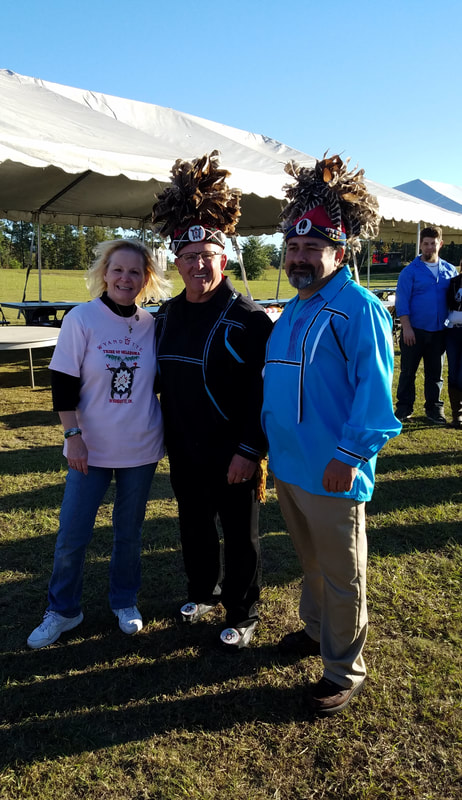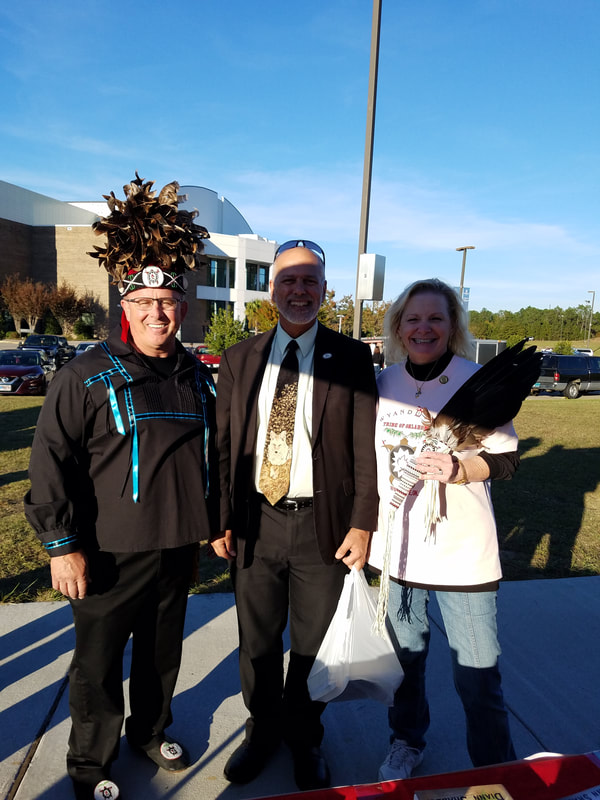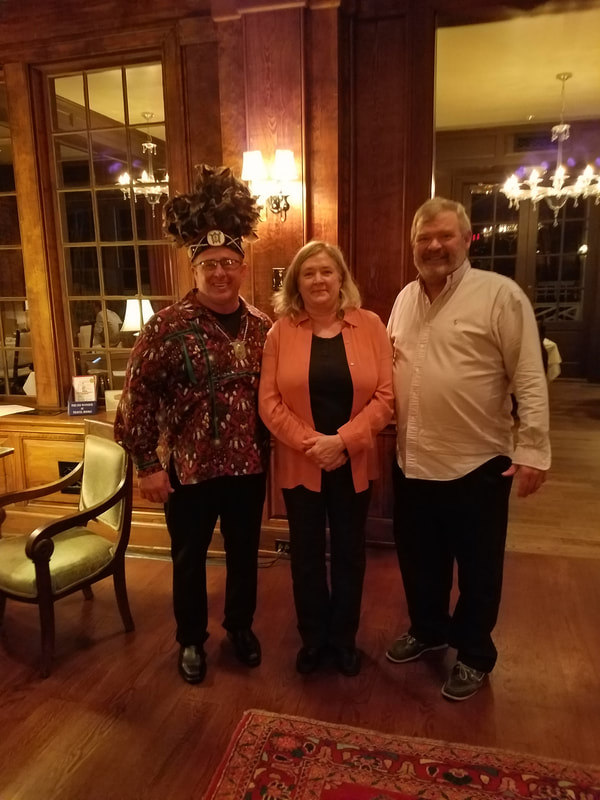|
Diann's Wyandotte Nation Indian Name is; Atendutqnyq,
"She who tells many stories" |
|
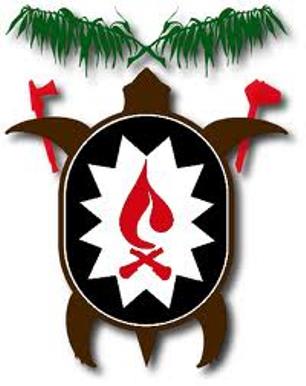
WYANDOTTE NATION OF OKLAHOMA
»Traditional tribal name: Wendat
»English name: Wyandotte Nation
»Language family: Northern Iroquoian
»Historical overview:
More than a dozen tribes of the Great Lakes Region collectively called themselves Wendat. Much like saying I am an American. Five of these tribes
comprised a confederacy known as the Huron Confederacy. The founder of the Huron Confederacy was the Attignawantan. Another tribe, the Tionontati, lived adjacent to the Attignawantan; however, they were not part of the Huron Confederacy. They also referred to themselves as being Wendat. The Wyandotte are in fact, descendants of the Tionontati and the Attignawantan. They were two tribes; however, culturally they were almost identical. After a series of wars with the Iroquois Confederacy known as the Beaver Wars, in 1649-50 they set aside their individual tribal names, united as one people and called themselves Wendat, after all this was their collective name.
In 1701, Antoine de la Mothe Cadillac, invited us to settle near his new Fort Detroit. Within a few years a portion of the tribe ventured south.
They settled around Upper Sandusky, Ohio, where they held a position of honor among other tribes of the Ohio Valley. In Ohio, after sustained contact with the British, our traditional name Wendat became corrupted and spelled as Wyandot. Pressure from settlers forced the Treaty of 1843 and our removal to land west of the Mississippi River. Upon arriving in the West, no land or provisions were available. Arrangements were made and land was purchased from the Delaware. Our new reservation was located on highly sought and fought over land in Kansas, which lead to the Treaty of 1855 and our termination. Our land was quickly allotted and sold to white interests.
»Traditional tribal name: Wendat
»English name: Wyandotte Nation
»Language family: Northern Iroquoian
»Historical overview:
More than a dozen tribes of the Great Lakes Region collectively called themselves Wendat. Much like saying I am an American. Five of these tribes
comprised a confederacy known as the Huron Confederacy. The founder of the Huron Confederacy was the Attignawantan. Another tribe, the Tionontati, lived adjacent to the Attignawantan; however, they were not part of the Huron Confederacy. They also referred to themselves as being Wendat. The Wyandotte are in fact, descendants of the Tionontati and the Attignawantan. They were two tribes; however, culturally they were almost identical. After a series of wars with the Iroquois Confederacy known as the Beaver Wars, in 1649-50 they set aside their individual tribal names, united as one people and called themselves Wendat, after all this was their collective name.
In 1701, Antoine de la Mothe Cadillac, invited us to settle near his new Fort Detroit. Within a few years a portion of the tribe ventured south.
They settled around Upper Sandusky, Ohio, where they held a position of honor among other tribes of the Ohio Valley. In Ohio, after sustained contact with the British, our traditional name Wendat became corrupted and spelled as Wyandot. Pressure from settlers forced the Treaty of 1843 and our removal to land west of the Mississippi River. Upon arriving in the West, no land or provisions were available. Arrangements were made and land was purchased from the Delaware. Our new reservation was located on highly sought and fought over land in Kansas, which lead to the Treaty of 1855 and our termination. Our land was quickly allotted and sold to white interests.
In 1857, some Wyandot who were unwilling to accept citizenship relocated to Indian Territory. After the Civil War concluded, in 1867
approximately 200 successfully sought reinstatement as a tribe. The name Wyandotte was officially used after the 1867 Treaty and reflects an influence from the French language.
Although we came to Indian Territory to remain ‘Indian,’ our small population, external influences and the decisions we made, compromised our
traditional way of life. In the early 1900s, many did not teach their children our native language, and soon those capable of continuing the traditional
ceremonies were gone. Our tribal interests focused on the care of orphans, land disputes, and ongoing issues with the government.
In 1983, Leaford Bearskin was elected chief. He had a vision and determined purpose for his people. Under his leadership we grew to almost 5,000
members, secured our right of self-governance, initiated cultural renewal, and achieved economic growth unlike any other time in our history. In September, we host our annual Culture Days, which includes language, history and special interest classes, along with our Pow Wow and other
activities.
approximately 200 successfully sought reinstatement as a tribe. The name Wyandotte was officially used after the 1867 Treaty and reflects an influence from the French language.
Although we came to Indian Territory to remain ‘Indian,’ our small population, external influences and the decisions we made, compromised our
traditional way of life. In the early 1900s, many did not teach their children our native language, and soon those capable of continuing the traditional
ceremonies were gone. Our tribal interests focused on the care of orphans, land disputes, and ongoing issues with the government.
In 1983, Leaford Bearskin was elected chief. He had a vision and determined purpose for his people. Under his leadership we grew to almost 5,000
members, secured our right of self-governance, initiated cultural renewal, and achieved economic growth unlike any other time in our history. In September, we host our annual Culture Days, which includes language, history and special interest classes, along with our Pow Wow and other
activities.
|
|
|
Chief Leaford Bearskin Wyandotte Nation Chief Leaford Bearskin, 91, an American war hero and leader, died Nov. 9, 2012. Born in Wyandotte, Okla., in 1921 to parents John and Myrtle Bearskin, Leaford Bearskin ... began his active and historic life on the territory of the Wyandotte Nation. A proud leader, he first and foremost wanted to be known as a Wyandotte Indian...
|
Read more click download file
| wyandotte_nation_of_oklahoma_chief_bearskin_pdf1.pdf |


















